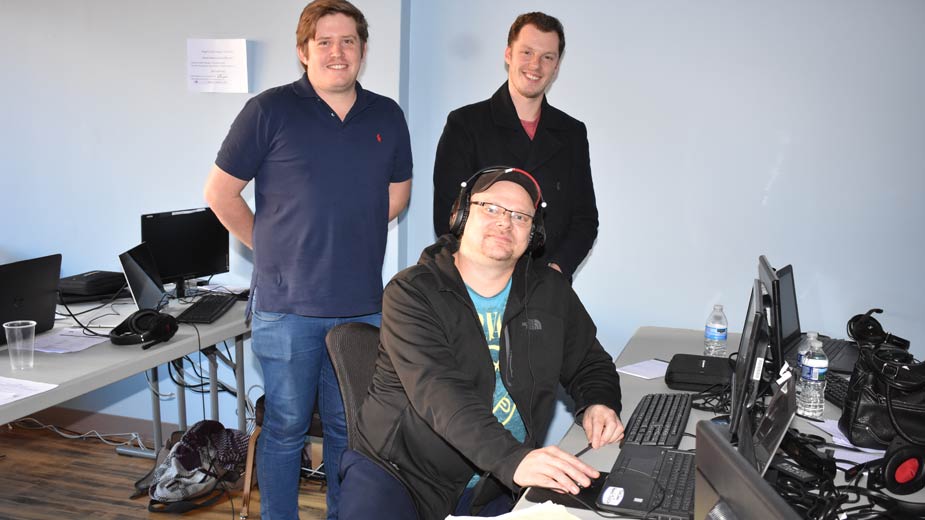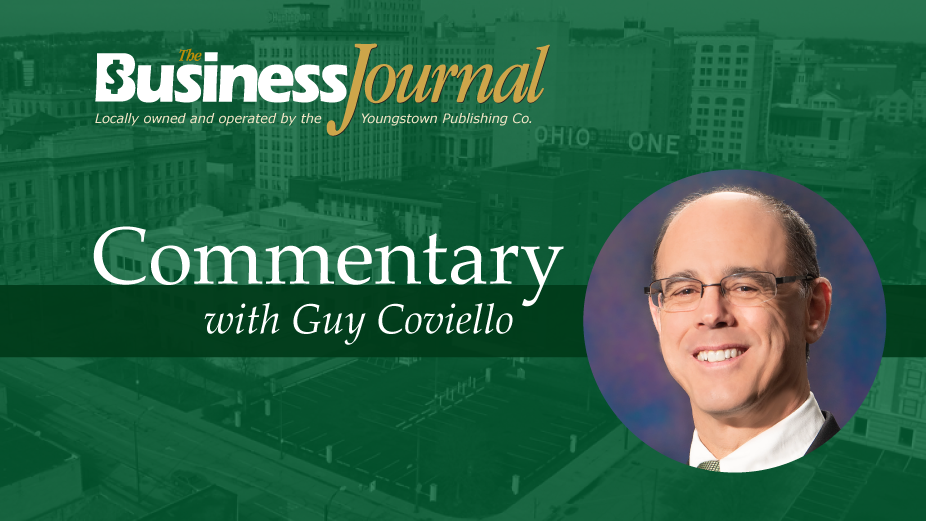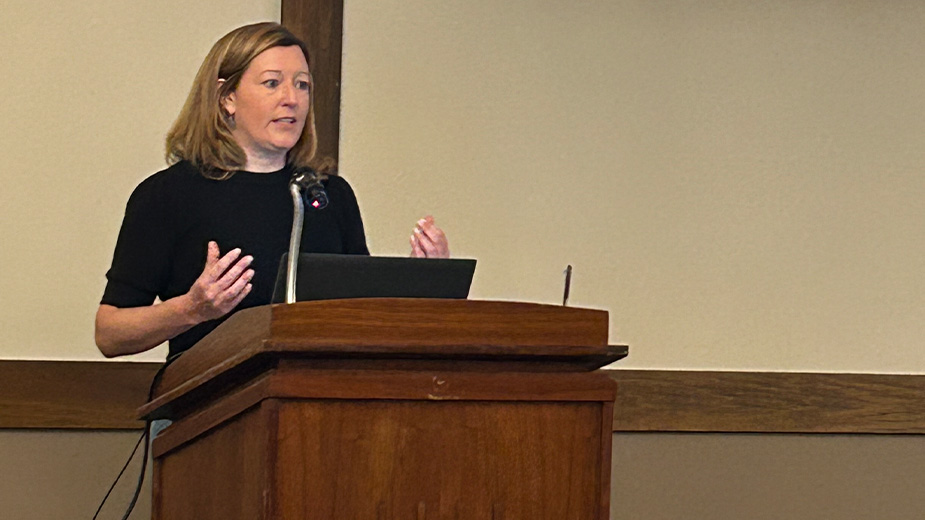Valley-to-Valley Lures Australian Tech Firm
YOUNGSTOWN, Ohio — Laid off from the fabricating plant at the General Motors Lordstown complex, Todd Shay of Howland is preparing for a new career.
Following three weeks of training just concluded at the Youngstown Business Incubator, Shay is prepared to graduate and start as a contractor for Ai-Media, based in Sydney, Australia, as part of what the company calls its Youngstown Center of Excellence. Graduation is scheduled for today and the center officially opens Nov. 20.
The Mahoning Valley came to Ai-Media’s attention through the Valley-to-Valley Initiative that U.S. Rep. Tim Ryan launched to reach out to companies in the Silicon Valley and encourage them to establish operations here.
One of the entrepreneurs that Ryan, D-13 Ohio, has been working with is Patrick McKenna, founder of High Ridge Global, a investment and advisory firm in San Francisco. McKenna connected Ryan with Tony Abrahams, CEO and co-founder of Ai-Media.
Ai-Media had 200 candidates apply and through testing narrowed that to its inaugural class, Ryan said.
Shay and his 12 fellow students trained as remote captioners or re-speakers. They listen to spoken material via remote video or audio feeds and re-speak the material into voice recognition software that transcribes the text, add punctuation and use a keyboard to make any further corrections.
The captioning is then made available in real time for various constituencies, whether students who are deaf or hard of hearing attending a lecture at a university or even someone watching an online video with the sound off.
In Australia, Ai-Media provides captioning for a variety of platforms, including television channels, workplace meetings, university lectures, conferences and online services such as Facebook, said product manager Rohan Williams. Williams and Richard Boyle, Ai-Media live-operations manager, taught the new re-speakers during the three-week course, held at the incubator, as part of its initiative to expand its presence in the U.S. market.
Ai-Media serves more than half of the universities in Australia. “In California alone there’s more universities than in Australia, so that market is huge,” Williams said.
Captioners must have the ability to listen and speak at the same time, Williams said. “While you’re listening, you’re speaking out the previous sentence. It’s kind of a continuous process,” he said.
“It is definitely challenging. It requires a fair amount of concentration,” said Jeremy Keeble of Toronto, one of the few trainees from outside the Valley. Musicians or video game players are good candidates, “anywhere where you take in sensory input and process and react in different ways simultaneously,” he said.
“It’s more than a skill. It’s an aptitude,” said Sue Sanossian, Ai-Media’s company secretary and a member of its board.
“It was really scary at first. It isn’t for everybody,” Shay said. “You have to very smart. You have to know the English language extremely well.” He enjoys getting to use his mind and doing something that will benefit people who can’t hear. “That’s a big thing right there,” he added.
“It’s something that’s appealing to universities,” Williams said. “If you’re a deaf or hard-of-hearing student who is trying to sit in a lecture class, this basically allows them to view what the lecturer is saying in real time on their own device.”
The way it’s done usually is booking the stenographer to come into the classroom or lecture hall and set up.
That, Brittney Woods said, is what her college roommate had to do. Woods, who recently returned to the area from Wyoming and lives in Mineral Ridge, is also in the Ai-Media class.
AI-Media – the “Ai” stands for “access innovation” – started in 2003 “with that access as a core focus,” Ai’s product manager, Williams. One of Ai-Media’s co-founders is “profoundly deaf,” he said.
Beyond that, he notes that 80% of all Facebook videos – whether to not disturb others in an office or other environment, or on a bus or other noisy venue — are watched without sound. “So that’s a big source of where captioning can make a big impact,” he said. The captioning also benefits individuals who speak English as a second language or anyone who has difficulty processing audio quickly.
The Mahoning Valley economy “ideally positioned” the company with an available potential workforce, and that its residents have an aptitude to learn re-speaking is “just a bonus,” Ai’s secretary, Sanossian, said.
Evaluations from the students in the class were “wonderful,” she said. Based on the advertising they saw, several students thought that the job offer was a scam and had family members discourage them.
“They were absolutely delighted to find out (A) it was real and (B) to actually be receiving the training for free,” she said. “Their onboarding experience has been very positive, from the recruitment stage through getting them through the training.”
Following the conclusion of the class, graduates will function as independent contractors, Sanossian said. The Youngstown Center of Excellence will exist largely in virtual form, with the incubator serving as a training site for future re-speaker classes, Sanossian said.
“Being independent contractors, the premise is that they will be able to work from anywhere that they choose. There’s no requirement for people to deliver this service form any particular location,” she said. “That’s the beauty of it.”
Because the service is “location agnostic,” as she put it, the re-speakers can work anywhere they can have their equipment, access to the audio and a good internet connection.
At the end of training, they receive a certification bonus that covers the cost of the equipment they will use, “and then some,” Williams said. Captioners start at an hourly rate of $9 or $10, but that rate rises up to $25 per hour based on experience and aptitude.
Every week or two, the company will provide a list of available sessions that the captioners can choose from, based on their availability. “They self-nominate for the sessions they would like to do,” Williams said.
Woods said she enjoys the work she is learning. “The nice thing is that you can be captioning an hour-long lecture and it really feels like five or 10 minutes when you’re doing it,” she remarked. Also, the flexible scheduling lets her pursue other things.
Sanossian sees the initial 13 jobs as just the start.
“Based on what we have experienced with this first group, we are looking at expanding the Youngstown Center,” she said, as well as replicating the model in other communities, she says. That expansion will happen as the company’s domestic market grows.
Ai-Media’s operation here signals that the Mahoning Valley can compete in the technology sector, the congressman said. “That’s why we want to bring people here to see the incubator and see what we’re doing in Youngstown or Akron,” he said.
Ryan sees Ai-Media’s Youngstown Center of Excellence as a model for similar projects. He points to the example of Zendesk Inc., a San Francisco-based communications software company that set up a small office in Madison, Wis.
That small office grew from a handful of employees to 220 today. Such firms look to grow outside Silicon Valley because costs are lower .
He points out that Revere Data – now known as FactSet Research Systems – closed its operation in India and transferred those jobs to the YBI campus.
“It’s a great opportunity for communities like ours if we’re very aggressive,” Ryan said. The initiative is looking at doing a three- to four-day visit to Silicon Valley, possibly taking someone like YBI’s Jim Cossler to meet with executives from companies that might be interested in moving jobs out of Silicon Valley.
He would like to see Valley communities put a representative in place there. That could result in contracting with a person or organization to act as the Mahoning Valley’s ambassador there.
“At some point we need to have a presence there making the case for why you should some here,” he said.
The congressman envisions a federal or state role in providing support for such a presence. While much of the country has benefited from globalization and automation, much of the country hasn’t.
“How do you distribute some of this? How do you incentivize investments for some these companies to grow in these other areas?” he asked. “There needs to be a national grand strategy on how to do that. Because the income inequality issue really has become a regional issue, too, and the growth hasn’t been shared.”
Pictured: Richard Boyle and Rohan Williams of Ai-Media, and Todd Shay (seated).
Copyright 2024 The Business Journal, Youngstown, Ohio.



